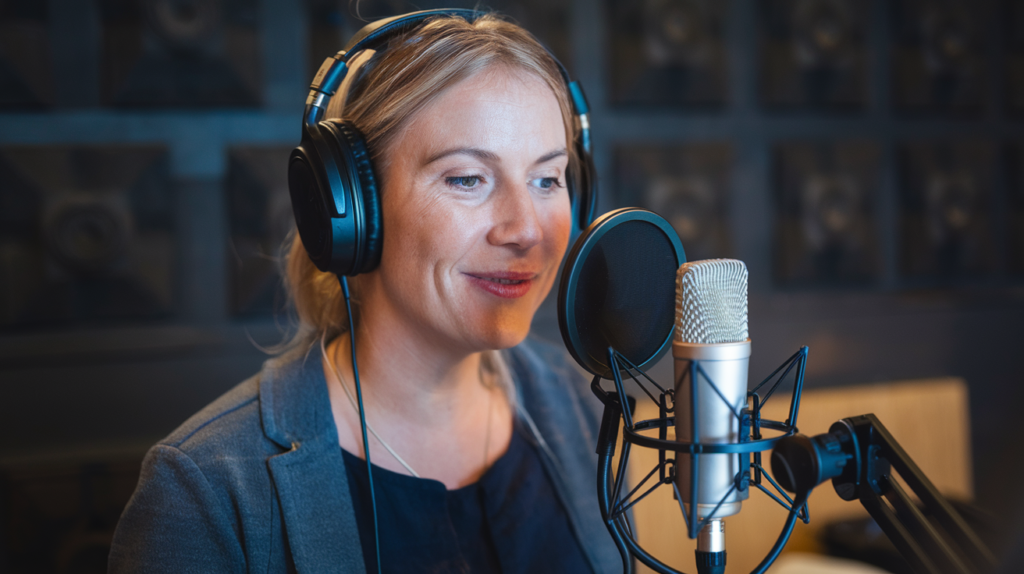Key Takeaways
- Māori language significantly influences New Zealand English (NZE) pronunciation, creating a distinct sound that reflects the cultural heritage of the region.
- Centralized vowel sounds and unique consonant pronunciations derived from Māori enhance everyday speech in NZE, showcasing variations not found in other English dialects.
- Integrating Māori vocabulary into local discourse fosters cultural identity and social cohesion, with common phrases like “kia ora” becoming part of daily communication.
- Voice talents must understand these phonetic traits to effectively connect with Kiwi audiences, ensuring authenticity and relatability in their performances.
- The historical context of Māori language enriches the understanding of its impact on New Zealand society and communication styles.
Ever wondered how Māori culture shapes the way New Zealanders speak? The influence of Māori on New Zealand English pronunciation is fascinating and often overlooked. As you dive into this unique linguistic blend, you’ll discover how indigenous sounds and rhythms have woven themselves into everyday speech.
Overview of New Zealand English
New Zealand English (NZE) offers a unique blend of influences, notably from Māori culture. The pronunciation and rhythm reflect this rich heritage, creating distinct sounds that resonate in everyday conversations. NZE features a range of vowel shifts and consonant variations not commonly found in other English dialects.
You’ll notice specific phonetic traits in NZE. For instance, the vowel sounds often shift toward a more centralized position. This can make words sound different than you might expect if you’re used to other varieties of English. Additionally, certain Māori place names and terms have been adopted, further enriching the linguistic tapestry.
Māori words frequently appear in local discourse, contributing to the authenticity of New Zealand’s cultural identity. You might hear phrases like “kia ora” or “whānau,” which seamlessly integrate into everyday language usage. This fusion creates a vibrant voice that captures the essence of its people.
Understanding these nuances enhances your appreciation for how language evolves through cultural interaction. If you’re exploring opportunities within voiceover work or talent representation, recognizing these characteristics becomes essential for effective communication with Kiwi audiences.
Whether you’re aiming to connect with locals or deliver content that resonates authentically, grasping the intricacies of New Zealand English can significantly enhance your approach as a voice artist or voice actor.
Historical Context of Maori Language
Māori language, or Te Reo Māori, has deep roots in New Zealand’s history and culture. As one of the official languages of New Zealand, its evolution reflects significant societal changes over centuries. The arrival of Polynesians around 1250–1300 AD marked the beginning of Māori language development. Over time, this rich linguistic heritage shaped the identity and communication styles within communities.
Maori Language Structure
Māori language structure is distinct from English, featuring a range of phonetic elements that influence pronunciation patterns. It consists primarily of vowels—five main ones: a, e, i, o, u—which often take on various sounds based on context. Consonants in Māori include unique pronunciations that can alter how words sound when integrated into New Zealand English (NZE). For instance, certain consonant clusters may transform or soften as they blend with local speech patterns, resulting in distinct variations not typically found in other English dialects.
Impact on New Zealand Society
The impact of Māori language extends beyond mere communication; it plays a vital role in shaping cultural identity and social cohesion within New Zealand society. Everyday phrases like “kia ora” resonate widely among locals and are commonly used to greet others warmly. Integrating Māori terms enriches conversations and fosters connections between individuals from diverse backgrounds.
For voice talents working in NZE contexts, understanding these nuances enhances their ability to connect authentically with audiences. Recognizing how Māori influences pronunciation helps voice actors deliver scripts more naturally while respecting cultural significance. This knowledge contributes to creating authentic voiceovers that resonate with listeners across various platforms.
Embracing the historical context and structural characteristics of Māori not only informs your understanding but also elevates your work as a voice artist looking to engage effectively with Kiwi audiences.
Pronunciation Features Influenced by Maori
Māori influences significantly shape the pronunciation features of New Zealand English (NZE), creating a distinctive sound that reflects the country’s cultural heritage. Understanding these specific phonetic traits is essential, especially for voice talents aiming to connect authentically with Kiwi audiences.
Vowel Sounds
Vowel sounds in NZE often exhibit characteristics derived from Māori language. Centralized vowel sounds, such as those found in words like “whānau” and “mana,” become more pronounced in everyday speech. These vowels tend to shift towards a more open or rounded quality, contributing to unique pronunciations not typically heard in other English dialects. For instance, the vowel in “cat” may sound closer to “cot” for some speakers, demonstrating this influence clearly. When delivering a voiceover or engaging in local conversations, recognizing these shifts can enhance clarity and relatability.
Consonant Sounds
Consonant pronunciation also showcases Māori’s impact on NZE. The presence of certain consonants like “wh” (as in “whale”) often carries a distinct breathy quality not present in standard English pronunciations. This particular articulation adds an authentic touch when used by voice artists during performances aimed at New Zealand audiences. Understanding how consonants blend with surrounding vowels creates fluidity and resonates well within local contexts. Embracing these nuances allows voice actors to deliver scripts that feel genuine and culturally aware.
By grasping these key pronunciation features influenced by Māori language, you position yourself as a knowledgeable voice talent ready to engage with diverse projects across New Zealand’s vibrant landscape.
Case Studies: Maori Influence in Everyday Speech
Māori language plays a crucial role in shaping the everyday speech patterns of New Zealanders. You can hear its influence across various regions and communities, making it an integral part of New Zealand English (NZE).
Examples from Different Regions
In urban areas like Auckland, you’ll often notice a blend of Māori vocabulary within casual conversations. Words such as “kai” (food) and “whānau” (family) have seamlessly woven into the local vernacular, showcasing how daily interactions reflect cultural heritage. In contrast, rural communities might emphasize place names derived from Māori, such as “Tauranga” or “Hawke’s Bay,” which carry distinct pronunciations that highlight regional accents.
The pronunciation shifts can be subtle but significant. For instance, “Wellington” often gets pronounced with a more rounded vowel sound than you’d find elsewhere. This shows how deeply ingrained these influences are within NZE’s phonetic landscape.
Influence in Different Communities
Different communities also exhibit unique adaptations of Māori sounds. In schools and workplaces across New Zealand, using terms like “kia ora” (hello) has become a common practice among diverse groups. This not only enriches communication but fosters inclusivity by acknowledging the indigenous culture.
You might also observe variations depending on the demographic makeup of neighborhoods. For example, areas with larger Māori populations tend to incorporate traditional phrases and sounds more frequently into their everyday dialogue compared to predominantly non-Māori areas.
These interactions contribute to the overall vibrancy of NZE and provide voice talents with rich material for performances that resonate with audiences on a cultural level. Understanding these nuances enhances clarity in voiceovers while ensuring authenticity in delivery—essential qualities for any voice artist aiming to connect meaningfully with listeners throughout New Zealand’s diverse landscape.
Conclusion
Māori influences on New Zealand English pronunciation are profound and far-reaching. By embracing these unique phonetic traits you not only enrich your understanding of NZE but also connect more deeply with New Zealand’s cultural identity. Recognizing the significance of Māori sounds in everyday speech enhances your ability to engage authentically in various contexts.
As you navigate this vibrant linguistic landscape remember that every word carries a story rooted in history and culture. Whether you’re a voice talent or simply someone interested in language you’ll find that integrating these elements fosters better communication and respect for the rich heritage that shapes New Zealand today.
Frequently Asked Questions
What is the impact of Māori culture on New Zealand English (NZE) pronunciation?
The influence of Māori culture on NZE is significant, introducing unique vowel shifts and consonant variations. This integration creates distinct sounds not commonly found in other English dialects, enriching everyday speech with indigenous rhythms and pronunciations.
How has Te Reo Māori evolved over time?
Te Reo Māori has deep roots in New Zealand’s culture, evolving since Polynesians arrived around 1250–1300 AD. Its structure features five main vowels and unique consonants that have shaped how words sound when incorporated into NZE.
Why are Māori terms important in NZE?
Māori terms like “kia ora” and “whānau” are essential to NZE as they reflect the cultural identity of New Zealanders. These phrases foster inclusivity and enrich local discourse, making them a natural part of everyday language.
What specific phonetic traits characterize NZE influenced by Māori?
NZE features centralized vowel sounds and breathy qualities in consonants like “wh.” Words such as “mana” and “whānau” illustrate these unique pronunciations, which contribute to NZE’s distinctive sound reflecting its cultural heritage.
How can voice talents benefit from understanding Māori influences in NZE?
By grasping the nuances of Māori-influenced pronunciation, voice talents can enhance clarity and relatability in their performances. This knowledge allows them to connect authentically with diverse audiences across New Zealand’s vibrant landscape.







